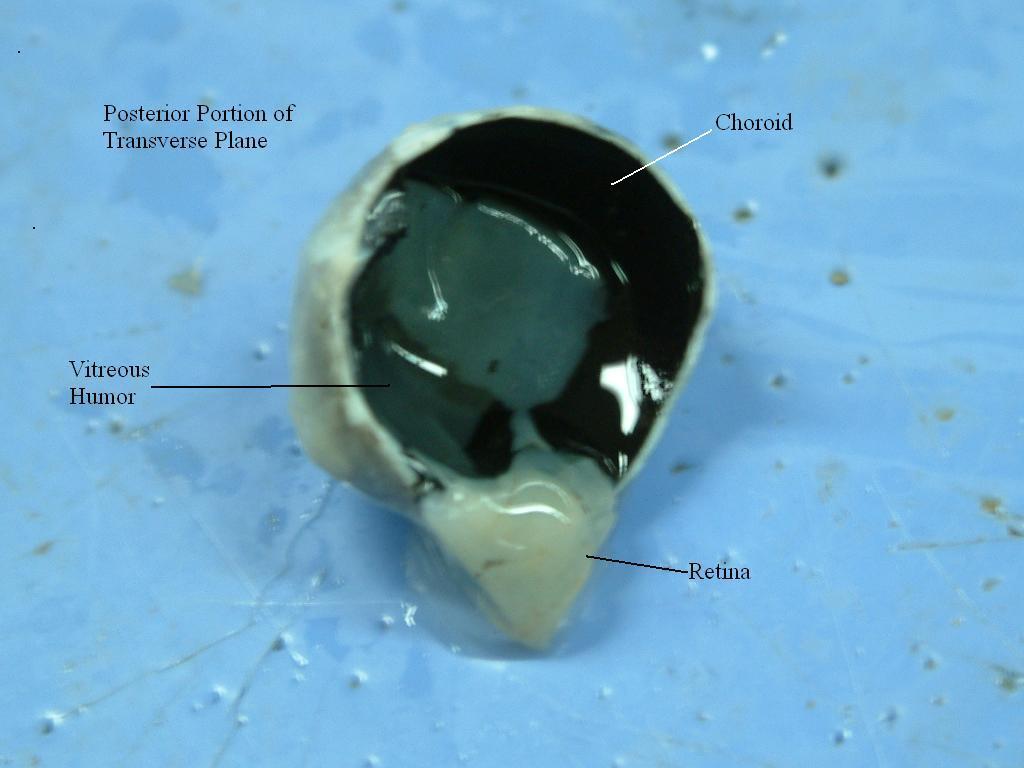
 |
The eye contains three tunics: the sclera, uvea, and retina. These structures perform the basic functions in both the mammalian and the avian eye.
Surrounding the pupil, choroid, and iris, the sclera is the outer most part of the eye. It is a tough, white, fibrous, protective coat that functions by resisting intraocular pressure. This is needed because the eye is under a higher pressure than the atmosphere. Containing blood vessels and nerves, the sclera helps to maintain the eye's metabolic processes and other needs.
The cornea, a modified portion of the sclera, is a non vascularized, transparent covering over the iris and pupil. In mammals, it is rather rigid and is acted upon by ciliary muscles that tighten and contract allowing the eye to focus. Most of the refraction in the eye takes place at the surface of the cornea.
The sclera is lined on the inside by the uvea, the middle tunic. A large portion of the uvea is made up of the choroid. Heavily vascularized, the choroid supplies nutrition for the retinal cells. The choroid is also heavily pigmented, which allows light to hit the retina without back scattering, causing sharper vision. In some nocturnal vertebrates there is a tapetum lucidum, which is a reflective material, present in the uvea. When a mammal is in dim light, this material allows for light to be restimulated on the visual cells in the retina. The tapetum lucidum is not present in either the pig or hawk eye.
The retina is the
innermost tunic, which contains two layers: the outer pigmented layer (lies
against the choroid) and the neural layer (lies against the vitreous humor).
Light must past through the cornea, lens, vitreous humor, and retina before
hitting the visual cells, which lie on the outer visual surface of the
retina. These visual cells contain rods and cones. All vertebrates process
cones, but not all possess rods (allow organism to see in color). Most
mammalian eyes do not contain rods, although all avian eyes do contain
these cells. Humans and higher primates are the only mammals that contain
this structure.